If you’re a pizza enthusiast like me, you’ve probably found yourself wondering about the best way to achieve that perfect, crispy crust and deliciously melted cheese.
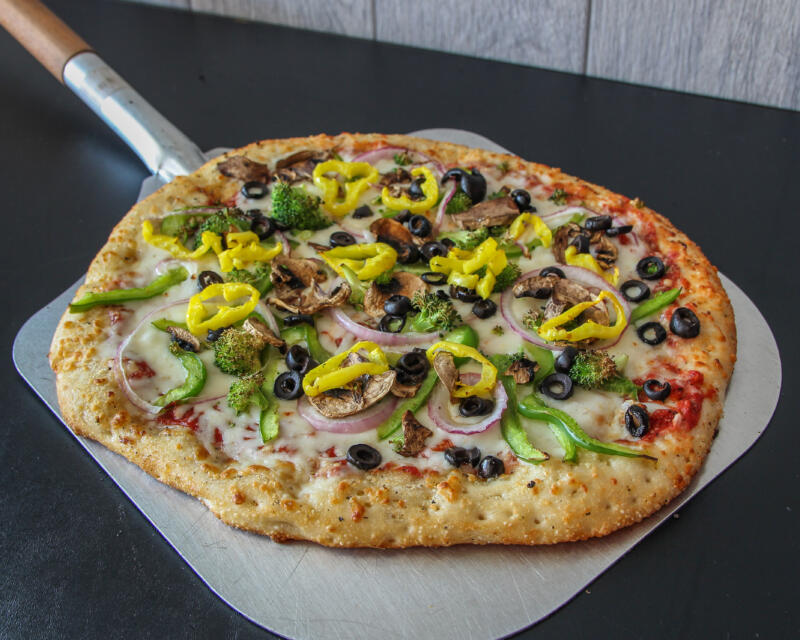
Is it all about the ingredients? The kneading technique? Or could the secret lie in the oven itself?
Today, we’re going to dive into the world of pizza ovens and traditional ovens, exploring their differences and how they can impact your pizza-making experience.
Highlights
- Temperature Capabilities: One of the key differences I’ve noticed is the temperature each oven can achieve. Pizza ovens can reach much higher temperatures than regular ovens, often exceeding 800°F. This high heat is crucial for achieving that perfectly crispy crust with a soft, airy interior in just a few minutes.
- Cooking Time and Texture: The cooking time in a pizza oven is significantly shorter, which not only preserves the freshness of the toppings but also contributes to the unique texture of the crust. In contrast, a regular oven takes longer, which can affect the moisture content and texture of the pizza.
- Flavor Differences: There’s also the matter of flavor. The wood-fired pizza oven imparts a distinct smoky flavor to the pizza, which is hard to replicate in a regular oven. This smoky essence is something I’ve come to cherish in my homemade pizzas.
In this article:
Understanding Traditional Ovens
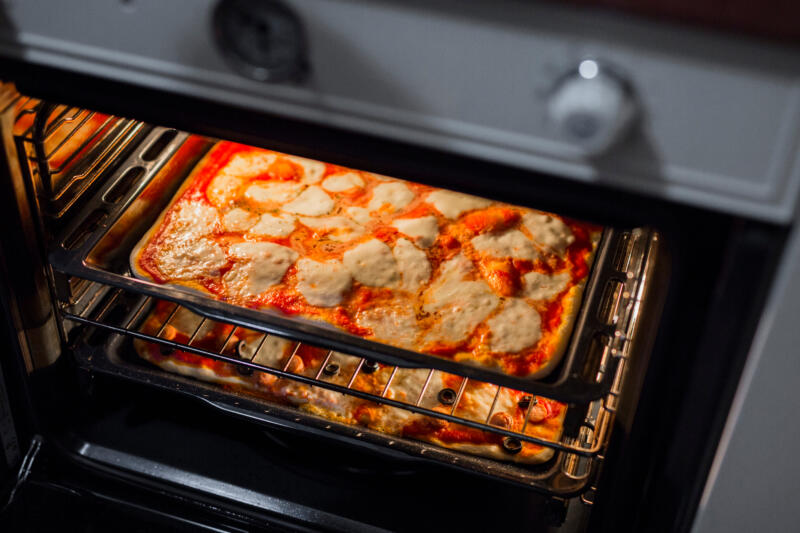
Traditional ovens, which include conventional ovens, electric ovens, and convection ovens, are a staple in most kitchens.
They work by using heating elements located at the bottom (for baking) and top (for broiling) of the oven. In a convection oven, a fan circulates the hot air, leading to more even heat distribution.
These ovens typically range from 200°F to 500°F (90-260°C), making them versatile for cooking a variety of dishes, from roasting meats to baking cookies.
However, when it comes to pizza, the lower temperatures and longer cooking times can result in a different texture and flavor compared to pizzas cooked in specialized pizza ovens.
Understanding Pizza Ovens
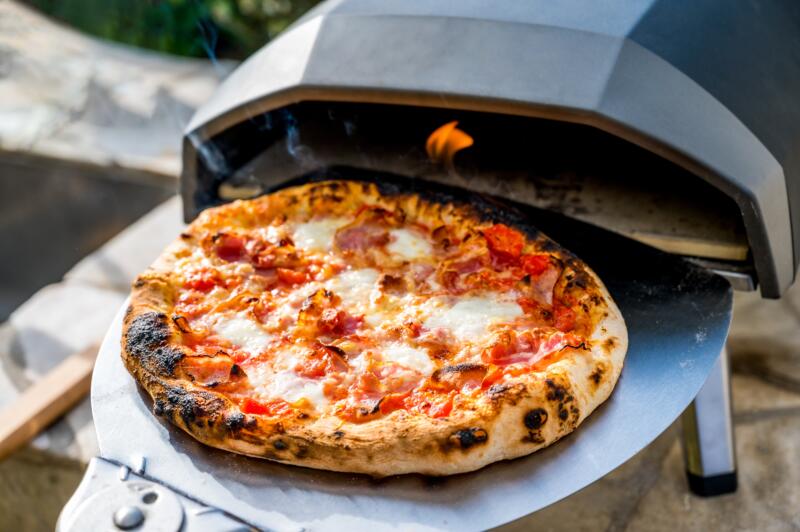
Pizza ovens, on the other hand, are designed specifically for pizza-making. They come in various types, including wood-fired, gas, and electric pizza ovens. These ovens can reach much higher temperatures – often exceeding 800°F or 420°C.
This intense heat is key to achieving a crisp, slightly charred crust that’s characteristic of pizzeria-style pizzas.
One unique feature of pizza ovens is the stone baking surface, which absorbs moisture from the dough, contributing to the crispiness of the crust.
Wood-fired ovens also add a distinct smoky flavor that’s hard to replicate in a traditional oven.
The Impact on the Baking Process
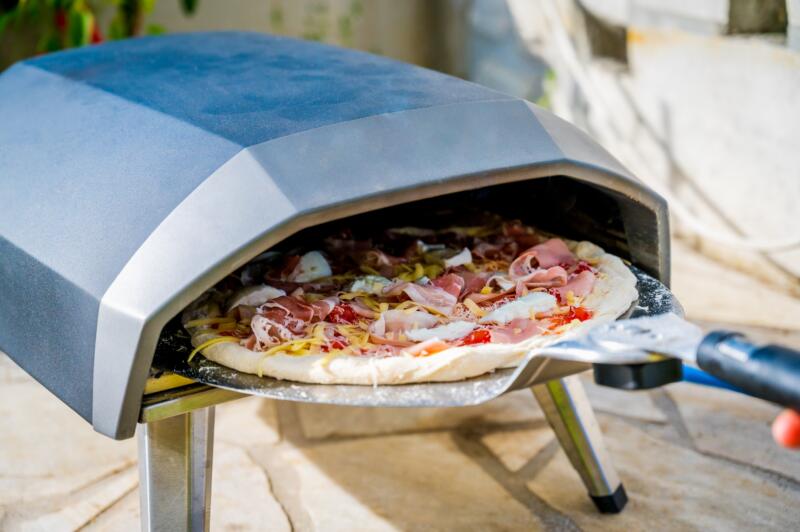
The high heat of a pizza oven can cook a pizza in just a few minutes. This quick cooking time not only gives the crust a unique texture but also allows the toppings to cook just enough without becoming overdone.
In contrast, a traditional oven cooks pizza at a lower temperature for a longer time. This slower cooking process can affect the texture of the pizza, often resulting in a softer crust and thoroughly cooked toppings.
Using each type of oven effectively requires a bit of a learning curve. For instance, managing the intense heat of a pizza oven requires careful timing to prevent burning, while using a traditional oven may require adjusting the temperature or position of the pizza for even cooking.
Whether you’re making homemade pizza for the first time or you’re a seasoned pro, understanding these differences can help you choose the right oven for your pizza-making needs.
The Impact on the Final Product

The oven you choose can significantly impact the final product, especially when it comes to the texture and flavor of the crust, the melting of the cheese, and the cooking of the toppings.
In a pizza oven, the high temperatures (around 800°F or 420°C) and the stone baking surface work together to create a crust that’s crispy on the outside, yet soft and chewy on the inside.
The intense heat also quickly melts the cheese and lightly chars the toppings, adding a smoky flavor that’s hard to achieve in a traditional oven.
In contrast, a traditional oven, which typically reaches temperatures of around 500°F or 260°C, cooks the pizza more slowly.
This can result in a softer crust and thoroughly cooked toppings. While you might not get the same smoky flavor as with a pizza oven, you can still achieve a delicious homemade pizza with a bit of practice.
To illustrate, I once made two pizzas using the same dough and toppings but cooked one in a pizza oven and the other in a traditional oven.
The pizza from the pizza oven had a noticeably crispier crust and a smoky flavor, while the one from the traditional oven had a softer crust and the flavors of the toppings were more pronounced.
Choosing the Right Oven for You
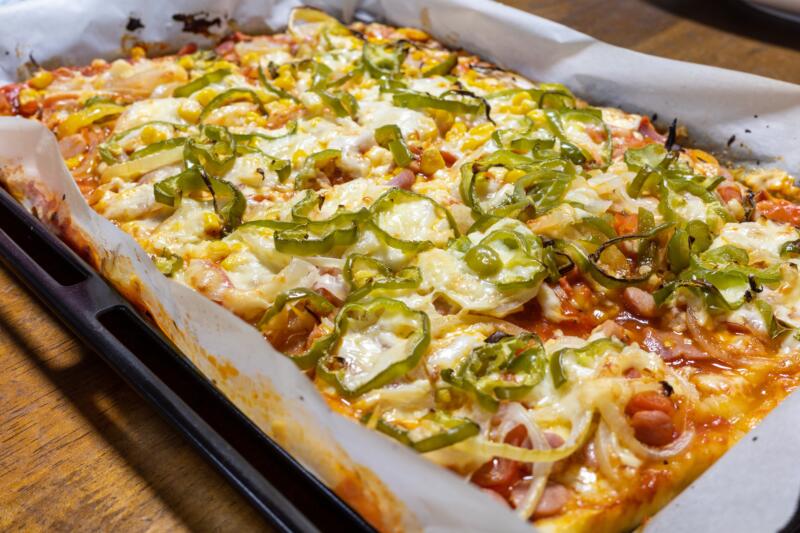
Assessing Your Needs
When choosing between a pizza oven and a traditional oven, there are several factors to consider.
Your budget is a major consideration, as pizza ovens can be quite expensive.
The space available is also important, as pizza ovens, especially wood-fired ones, can take up a lot of space.
You should also consider how often you plan to make pizza and your personal taste preferences. If you love the smoky flavor and crispy crust of a wood-fired pizza, then a pizza oven might be worth the investment.
Maintenance and Durability
Both types of ovens require regular maintenance. Pizza ovens, especially wood-fired ones, need to be cleaned regularly to remove ash and soot.
Traditional ovens also need regular cleaning to remove food spills and grease.
In terms of durability, a well-maintained pizza oven can last for many years, while the lifespan of a traditional oven can vary depending on the brand and model.
Common issues for pizza ovens include cracks in the stone surface, while traditional ovens might need replacement of heating elements over time.
The availability and cost of replacement parts should also be considered. For some high-end pizza ovens, replacement parts can be quite expensive and may need to be ordered from the manufacturer.
Cost Considerations
The upfront cost of a pizza oven can be quite high, especially for wood-fired models. However, there are also more affordable options, such as portable pizza ovens.
Traditional ovens, on the other hand, are generally more affordable and are often included in the kitchen of most homes.
The ongoing costs associated with each type of oven should also be considered. This includes energy usage, which can be higher for pizza ovens due to their high temperatures, and maintenance costs.
Making the Decision
Choosing the right oven for you involves weighing all these factors. Consider your budget, space, pizza preferences, and willingness to maintain and care for the oven.
Remember, the best oven for you is the one that fits your needs and helps you make delicious pizzas you love.
Conclusion
We’ve explored the ins and outs of both traditional ovens and pizza ovens, highlighting their unique features, benefits, and drawbacks.
From the high-intensity heat of pizza ovens to the versatile and familiar traditional ovens, each has its own strengths when it comes to pizza-making.
Remember, there’s no one-size-fits-all answer. The best way to discover your preferred pizza-making method is to experiment. Try making pizzas in both types of ovens if you can, and see which results you prefer.
And of course, we’d love to hear about your pizza-making adventures!
Do you have a favorite type of oven for making pizza? Have you discovered any tips or tricks along the way?
Share your experiences, questions, and comments below. We’re all here to learn and share our love for pizza.